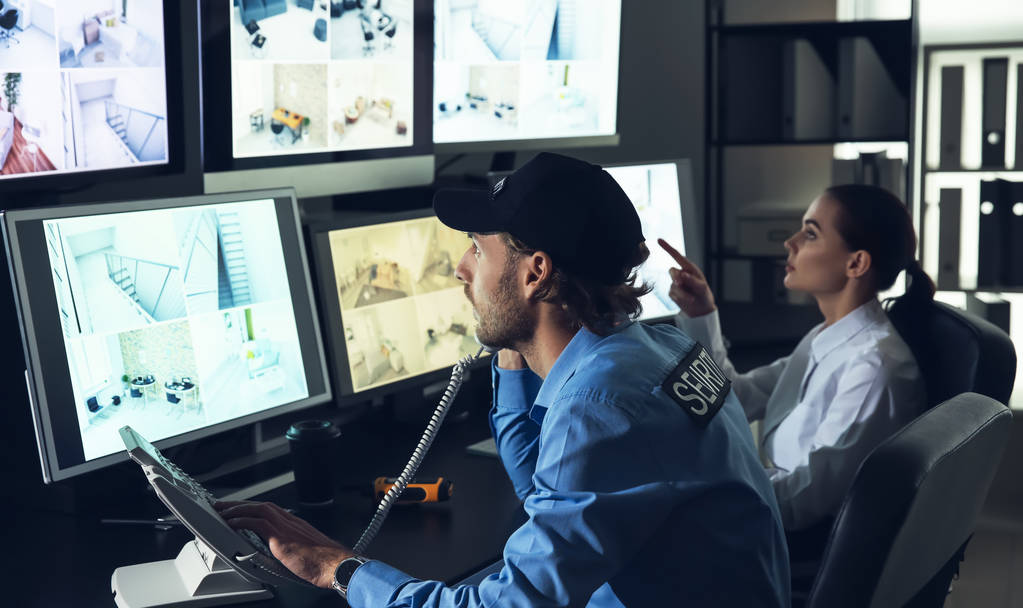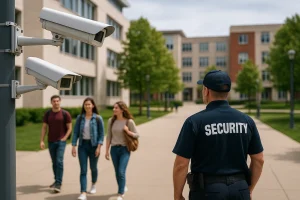Essential Equipment For Security Guards: Ensuring Safety And Efficiency
Security guards are vigilant guardians whose role in safeguarding people and assets can best be accomplished by the most efficient security guard tools. Security guard safety equipment is often referred to as personal protective equipment (or PPE), and it protects security guards from hazards,potential confrontations, and aids them in their duties. Here is an alphabetical […]
By David Kerolles
May 7, 2024

Security guards are vigilant guardians whose role in safeguarding people and assets can best be accomplished by the most efficient security guard tools. Security guard safety equipment is often referred to as personal protective equipment (or PPE), and it protects security guards from hazards,
potential confrontations, and aids them in their duties.
Here is an alphabetical list of the most essential PPE equipment for security guards:
- BATON– Often worn in a holster on the guard’s belt, a baton is equipment whose visibility can deter potential problems. Some states such as California require security guards to undergo an approved Baton Training Course from a licensed training facility.
- BELT– These outer duty belts have special pieces that slide or clip onto it to hold small gear. They are sometimes issued by the security guard’s employer.
- BODY ARMOR– Body armor vests can reduce the risks to a guard from stabbing, slashing or firearm injuries. There are heated vests designed for cold weather outdoor patrols as well.
- COMMUNICATION DEVICES– Cell phones, two-way radios, or walkie-talkies are all devices for keeping a security guard connected to their team members or dispatch. Additional technology offers security security management software that keep security teams connected. Also of note are additional tools like lone worker alarm systems that can be centralized/monitored via a phone app- for emergencies, check-in, or GPS tracking.
- FIRST AID KITS– Security guards carry mini first aid kits- for themselves or others with minor needs.
- FLASHLIGHT– This is a tool used by security guards for illumination, to deter suspicious activity, or as a self-defense tool if physical force becomes necessary. Guards need no professional training to use flashlights as weapons. Specific types of flashlights can be used depending on the assigned task. There are tactical flashlights that are waterproof or have disabling strobe modes, headlamps that are hands-free, or safety certified flashlights used in industries to minimize the risk of sparking in potentially flammable conditions.
- FOOTWEAR– Many guards wear boots, most often in black for a professional look. Any security guard footwear must be durable, supportive, non-slip for various weather conditions, and comfortable (especially important for walking patrols). Some guards prefer shoes or boots with a toe-cap for safety.
- GLOVES– Search gloves are necessary PPE to protect security guards that must perform any kinds of searches in pockets or bags. These are usually leather or Neoprene shells that are slash, cut and puncture resistant to keep hands from accidentally being jabbed with a knife or needle while performing searches. Gloves can have a case that attaches to a duty belt.
- HANDCUFFS– These are likely used solely on jobs requiring security guards to make arrests, and may be issued by the employer. CA does not require any permit for handcuff use, though CA security guards are mandated to complete Power to Arrest training. Also some guards recommend buying a personal long handcuff key. Handcuffs are often used in stressful situations- long handcuff keys are easier to manually use under stress than the smaller keys that come with the handcuffs.
- HANDGUNS– These are used by armed security guards, often with additional training requirements. In California, security guards can possess handguns and other types of firearms while on duty only if they abide by all state and local laws.
- ID/LICENSE– Guards can use a lanyard or armband to display ID badges or cards issued by their employer or relevant regulatory authority. In CA security guards must possess a valid current security guard registration card on his or her person while on-duty. If their card is pending, a hard copy printout of BSIS approval with valid picture ID can be used in the interim (BPC Section 7583.17).
- NOTEBOOK AND PEN– This is a very low tech tool for security guards. However it never runs out of batteries and is useful to jot down notes or observations for later reports.
- PEPPER SPRAY– This can be used to deter people or animals causing disruptions, and is the PPE most commonly used by unarmed security guards. California requires security guards to obtain a Certificate of Training and Identification for carrying tear gas and pepper spray.
- UNIFORM– The uniform is the most critical piece of security guards equipment. Among security guards, a uniform fosters purpose, cohesion, and visual team identity. In their public interactions, it provides authority, safety, visibility, and professionalism. For instance, with the rise of organized retail crime, uniformed security guards are increasingly vital to deter/impede crime. Uniformed guards also provide visibility and prevent injuries in crowd control during dangerous events.
What is the latest technology that security guards use?
Beyond the basic PPE equipment for security guards, there is an array of technology tools that are transforming the scope of security personnel. This technology can involve:
- DRONES– Drone use can enhance patrols, provide effective crowd control, and prevent theft round the clock in warehouses or construction sites.
- ROBOTICS– Robots can be used to detect suspicious objects, unusual activity, or abnormal temperatures or leaks. Guard or surveillance robots enhance security personnel as they do not get tired or need downtime. Their downside is that they lack emotional intelligence for informed decision-making in varied situations.
- VIDEO SURVEILLANCE/CCTV CAMERAS– This technology allows security professionals to monitor premises in real-time, so to respond promptly and proactively to situations or emergencies.
- SOFTWARE FOR MANAGING/ANALYZING VIDEO FOOTAGE– Video intelligence software enables security to detect/count people, vehicles, forklifts, movements, etc. and can send alerts to a security team.
- UTILIZING VIDEO REALITY (VR)– Simulated 3-D training environments let security personnel interact in virtual surroundings- training risk-free for high-stress dangerous situations. Studies show that VR-trained officers have a 20% higher efficiency in handling real-life incidents.
In conclusion, this is just a brief overview of the latest crucial tools and technologies that security guards can use to carry out their duties in the safest and most effective ways.
Related Posts
Safety
How to improve campus security with better surveillance.
By Chrissy
October 1, 2025
Security Guards
In brief, the primary work and duties of security guards and security officers is ultimately to protect people, property and information. Both work together to implement a unified security plan. But the differences between their roles are in their scope of responsibility, training requirements, job demands, and pay. Security guard vs. security officer- the titles […]
By Catherine Shannon
February 25, 2024
Safest Places to Live in the US
Do you know which US city was founded as the result of political maneuvering, racial issues, national identity and compromise? Washington DC of course. Any history buffs (or fans of the musical Hamilton) know that Washington DC began as a compromise between the North and the South. Alexander Hamilton and the northern states needed the […]
By Leila Monroe
November 26, 2024





